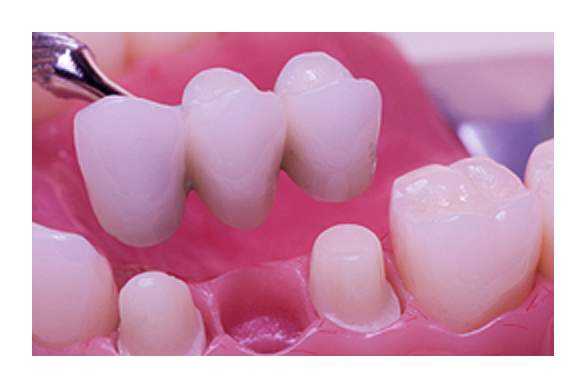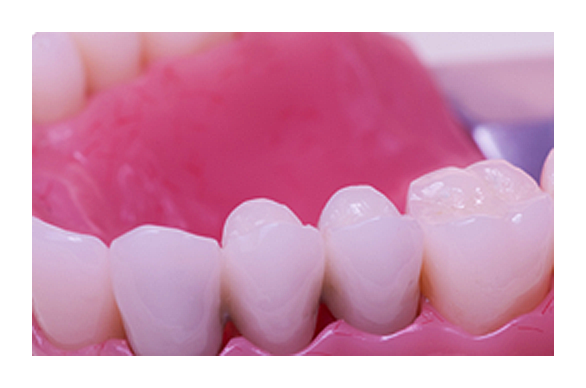Fixed Bridges in Brampton
Dental bridges bridge the gap created by one or more missing teeth. A bridge is made up of two crowns for the teeth on either side of the gap. The two anchoring teeth are called Abutment teeth between them a false tooth/teeth is placed in between. These false teeth are called pontics. They can be made from gold, alloys, porcelain, or a combination of these materials.
What Are the Benefits of Dental Bridges?
- Restore your smile
- Restore the ability to properly chew and speak
- Maintain the shape of your face
- Distribute the forces in your bite properly
- Prevent remaining teeth from drifting out of position
Before

After

What Types of Dental Bridges Are Available?
Traditional bridges involve creating a crown for the tooth or implant on either side of the missing tooth, with a false tooth in between. Traditional bridges are the most common type of bridge and are made of either porcelain fused to metal or ceramics.
Cantilever bridges are used when there are adjacent teeth on only one side of the missing tooth or teeth.
Maryland bonded bridges (also called a resin-bonded bridge) are made of plastic teeth and gums supported by a metal framework. Metal wings on each side of the bridge are bonded to your existing teeth.
How Long Do Dental Bridges Last?
Dental bridges can last 5-15 years and even longer with good oral hygiene and regular checkups.
Will It Be Difficult to Eat With a Dental Bridge?
Replacing missing teeth with a dental bridge should actually make eating easier.
Will the Dental Bridge Change How I Speak?
It can be difficult to speak clearly when teeth are missing. Wearing a dental bridge with the anterior teeth in their proper relationship will help you speak properly.
Book Your Appointment

